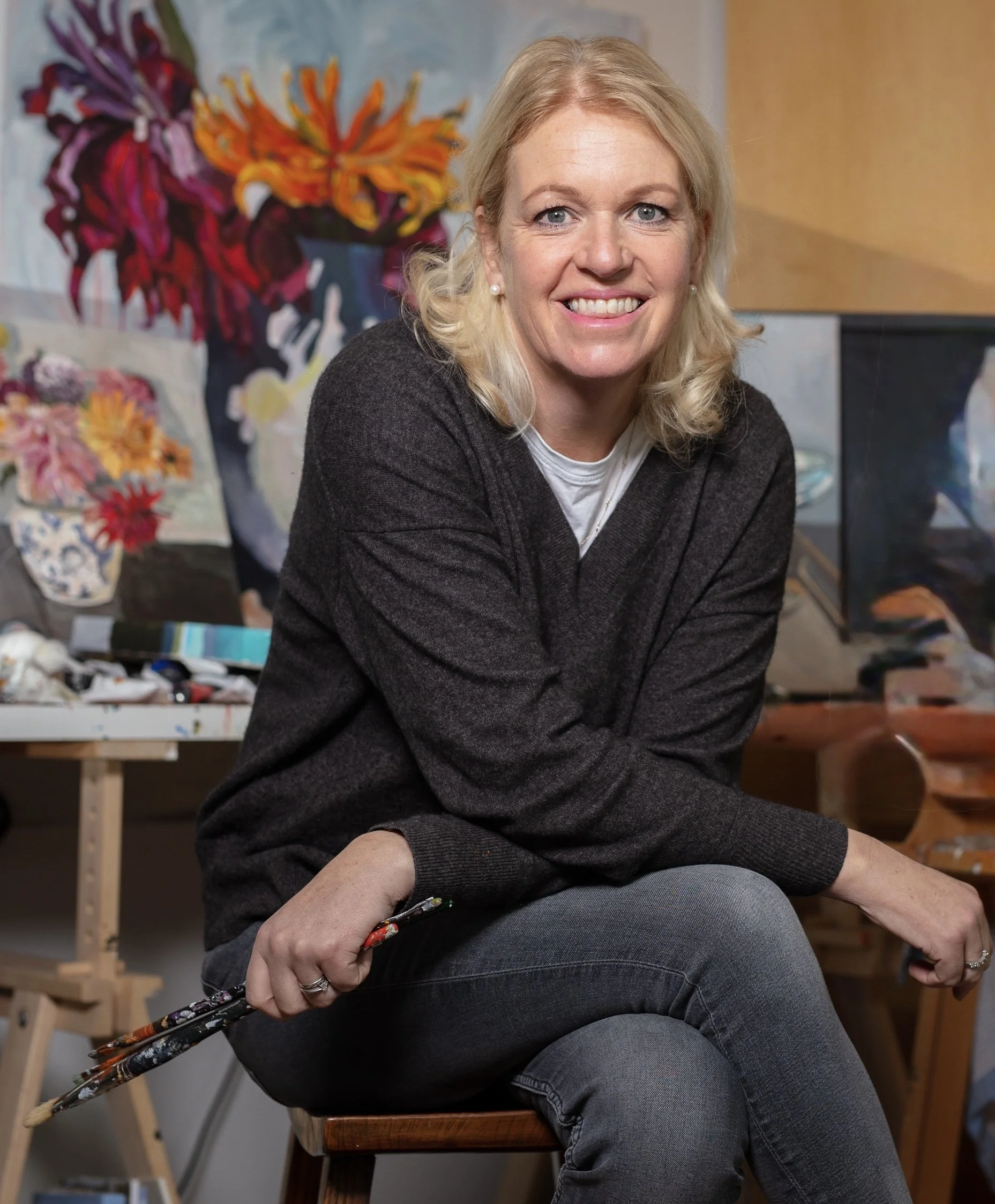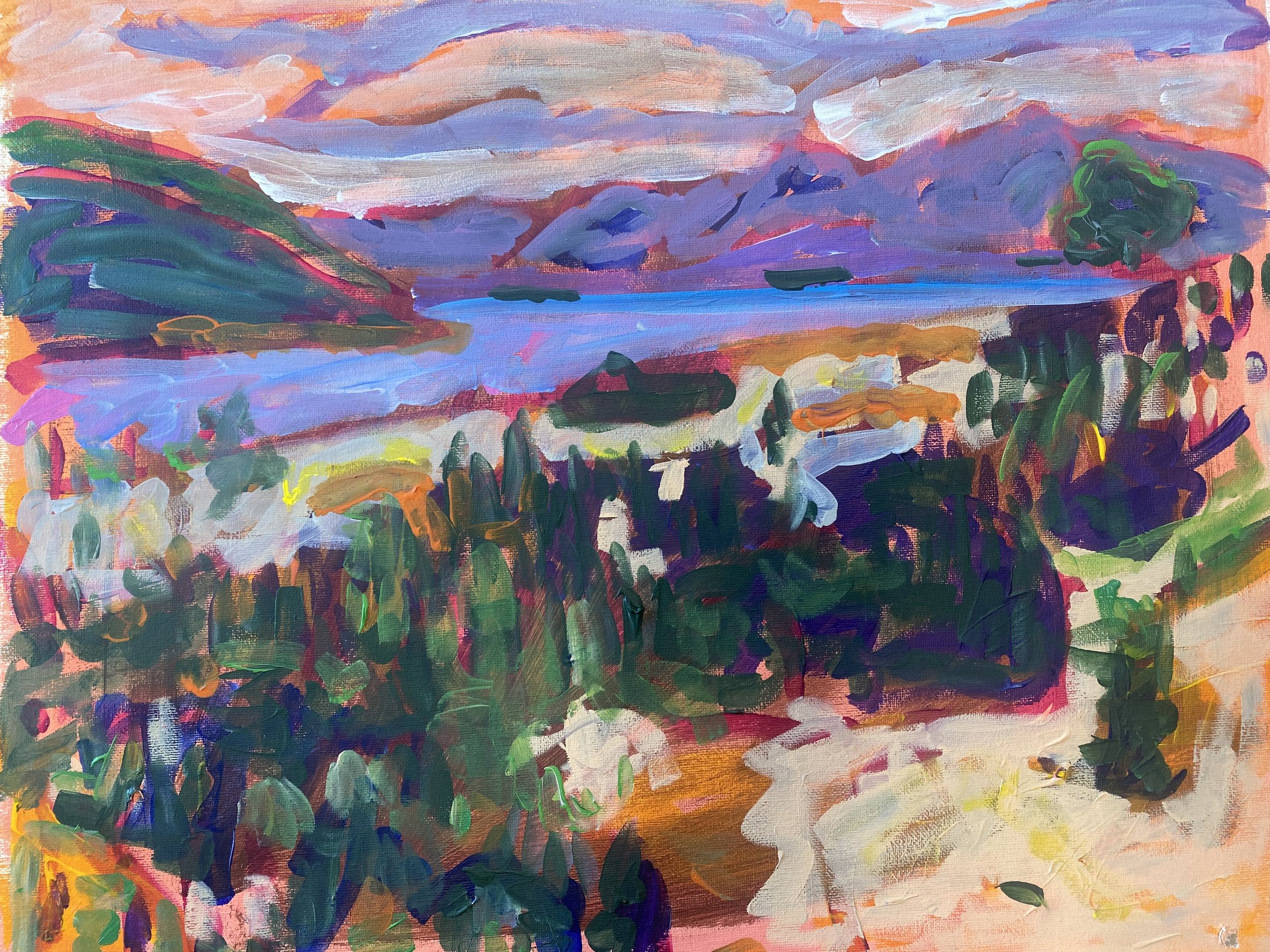For me, it is not about reproducing the visible,
but rather making it visible.
Hello, I’m Harry (Harriet) Millar.
COLOUR
Colour, typically defined as a property of visible light and determined by the wavelength of the light, has the capacity to soothe, excite, challenge, and intensify. But light, the primary source for all existence, is the medium that enables this spectrum of emotional and intellectual engagement.
Science tells us that the visual cortex sends colour information to other parts of the brain enabling us to process what we are seeing. But what painting has taught me is that the actual perception of colour is completely subjective, that there is no fixed or finite way to see or be, that art is an open and subjective space, replete with instability, incoherence and doubt. To see takes time.
To understand how our eyes and brain work together to extrapolate and translate light into colour, I have developed a painterly process which I call Radiant Light. This involves three stages of paint application, the overlay of which enables the full spectrum of light to shine through the applied colours.
The first stage involves thick layers of acrylic underpainting in loose brushstrokes blocking the forms of a composition in light value, non-local and instinctive colour, rather than actual or analytical-mimetic colour.
The second stage, still in acrylics, uses dark value local colour to over-block the primary marks, but leaving happenstance gaps that allow the contrasting luminous light value underpainting colours to glance through (bright under ‘light’ fine-tuning) evoking suggestions of change, movement, chance and dimensions.
At the third stage, using oil, close attention is paid to value interactions and contrasts amongst contiguous colours and tones, and how these combine to form, or intensify, shapes, especially when in direct contact. For example, how a cast shadow relates to the object instigating the shadow.
In my practice, and in those of my students, these three strategic stages merge to produce works that are dimensional yet fluid, well-suited to the thematic concerns – making visible and understandingthe evidential changes manifest in nature and the membrane of human tenancies overlaying these.




